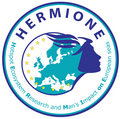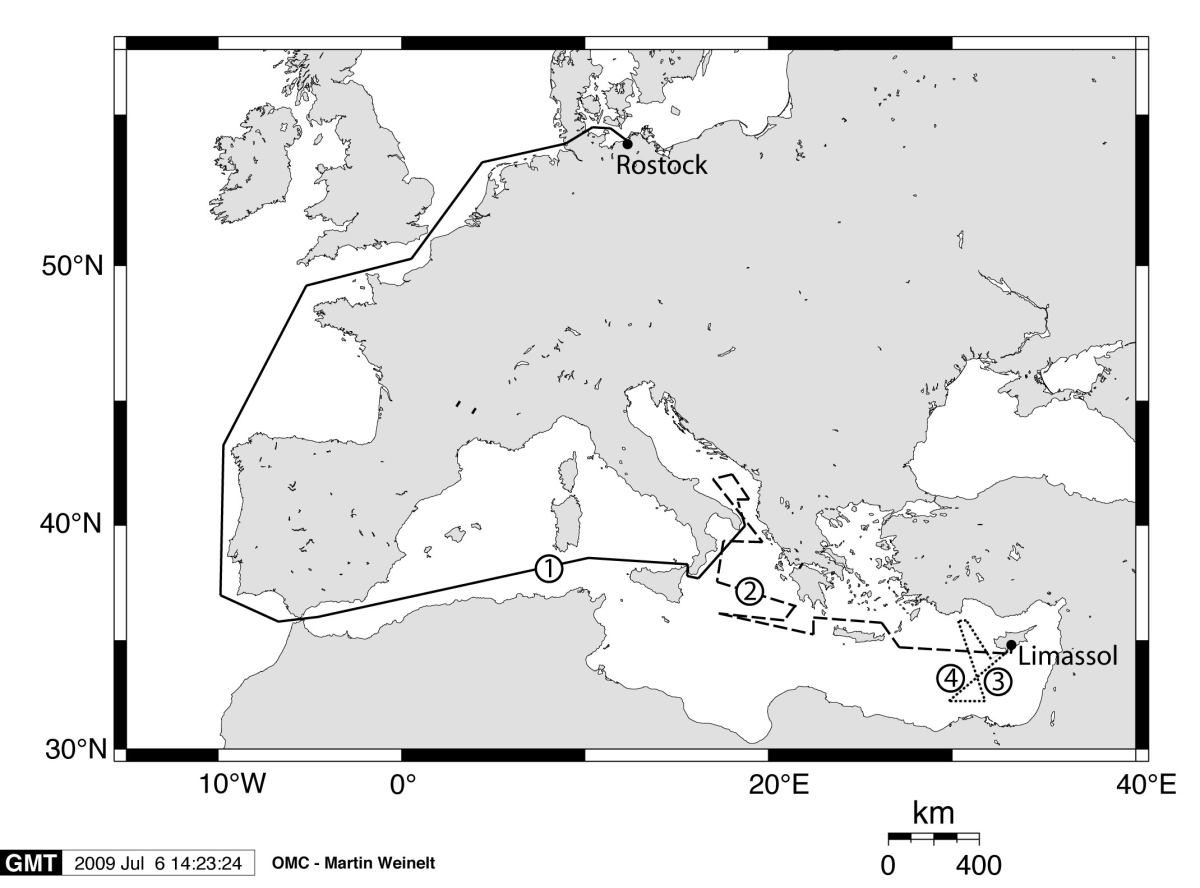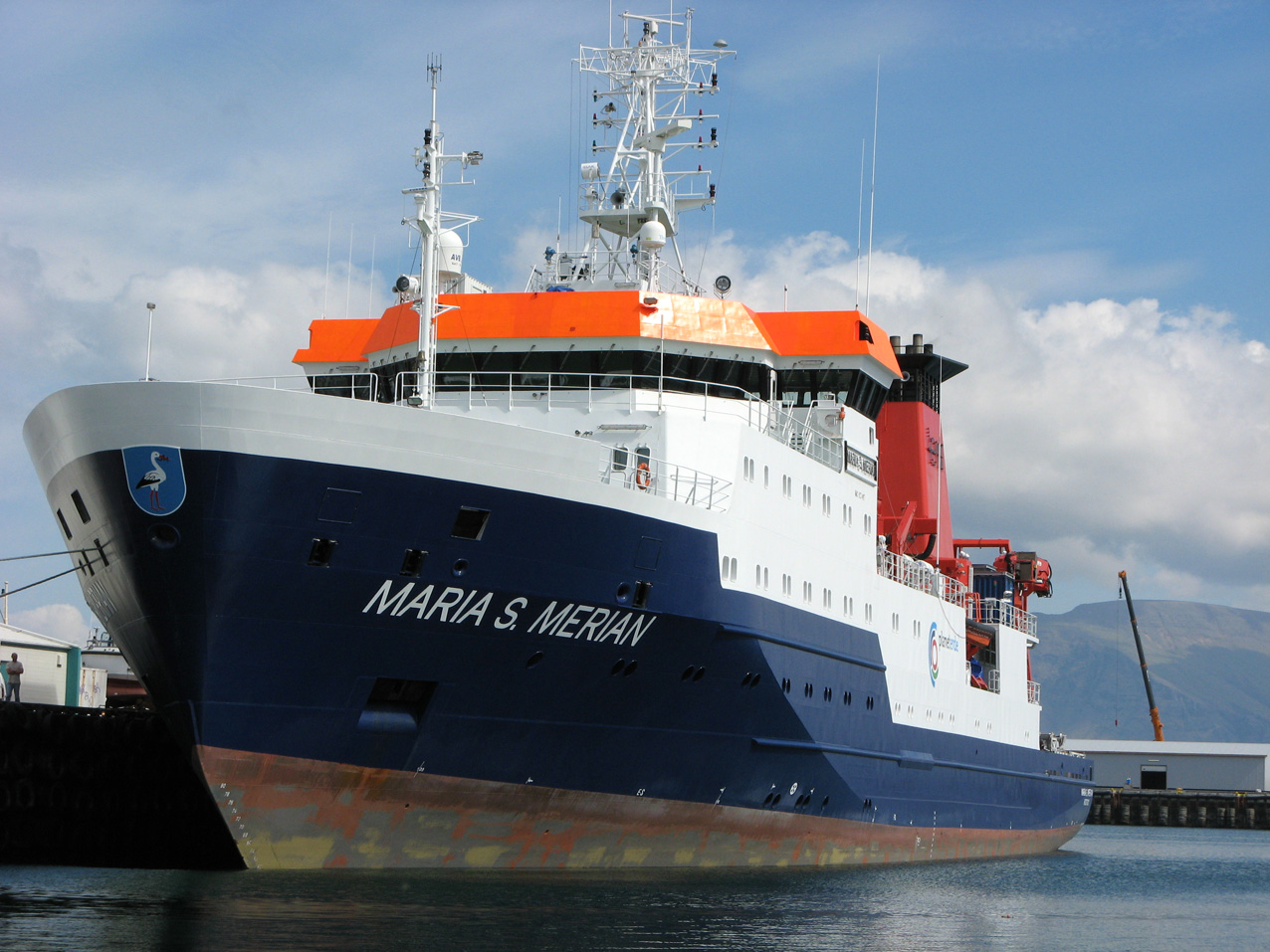Seitenpfad:
- Presse
- Pressemeldungen 2009
- 01.12.2009 European scientists at sea: A scient...
01.12.2009 European scientists at sea: A scientific weblog

Where is Maria S. Merian?
Written by the scientists on board of RV MARIA S MERIAN
25 October - 14 December 2009
The weblog starts here:
25 October - 14 December 2009
The weblog starts here:

Chief scientist
leg 3
Antje Boetius
a.boetius.d at merian.briese-research.de
leg 3
Antje Boetius
a.boetius.d at merian.briese-research.de

Chief scientist leg4
Frank Wenzhoefer
f.wenzhoefer.d at merian.briese-research.de
Frank Wenzhoefer
f.wenzhoefer.d at merian.briese-research.de
Introduction
European scientists at sea: A scientific weblog on the expedition MSM13 “HOMER - Hotspot Micobial Ecosystem Research” with the German research vessel Maria S Merian to the Eastern Mediterranean Sea
Written by the scientists on board of RV MARIA S MERIAN
25 October - 14 December 2009
Reports on this web server will be published in English language only. Stay curious and read the exciting news written by the crew. See pictures nobody has ever seen before and learn how life is on board of a research vessel. For further information read the press release here.
Written by the scientists on board of RV MARIA S MERIAN
25 October - 14 December 2009
Reports on this web server will be published in English language only. Stay curious and read the exciting news written by the crew. See pictures nobody has ever seen before and learn how life is on board of a research vessel. For further information read the press release here.
Map of the cruise MSM 13
Background information
European Deep Sea Research: The HERMIONE Project – “Hotspot Ecosystem Research and Man's Impact On European Seas”
Naming their expedition after the poet HOMER, deep-sea researchers of the EU project HERMIONE are exploring the Eastern Mediterranean Deep Sea. Their goal is to understand the processes regulating the energy sources for chemosynthetic ecosystems in the deep sea and to map their biodiversity and distribution.
The Eastern Mediterranean Deep Sea hosts many chemosynthetic ecosystems rich in chemical compounds that can be used by microbes to produce biomass and energy for deep sea animals. Diverse and highly specialized life forms can thrive in such ecosystems associated with mud volcanoes, pockmarks and brine pools. It is a wondrous fact that seafloor microbes can turn all kinds of substrates into food and habitats for deep sea life, including sunken woods. How microbial processes influence the diversity and distribution of deep-sea life is the main question of the expedition HOMER. To explore the deep sea floor, measure geochemical processes, and record the diversity of life and its habitats the marine scientists take a number of high-tech tools with them. The most important one is QUEST4000 (MARUM, University Bremen), an unmanned submersible equipped with high-resolution video systems and powerful arms for collecting samples. We will also use an in situ Heat flux probes to learn about the seafloor temperature and fluid flow (IfM GEOMAR), the autonomous underwater vehicle SEAL (MARUM, University Bremen) to map the seafloor in high resolution, and many scientific payloads of AWI and IFREMER to study biological and chemical processes at the seafloor.
The expedition starts 25 October and ends 14 December 2009 in Limassol, Cyprus.
Manfred Schloesser
For further information please contact
Dr. Manfred Schlösser, Tel: 0421 2028 – 704,
[Bitte aktivieren Sie Javascript]
Dr. Susanne Borgwardt, Tel: 0421 2028 – 704,
[Bitte aktivieren Sie Javascript]
European Deep Sea Research: The HERMIONE Project – “Hotspot Ecosystem Research and Man's Impact On European Seas”
Naming their expedition after the poet HOMER, deep-sea researchers of the EU project HERMIONE are exploring the Eastern Mediterranean Deep Sea. Their goal is to understand the processes regulating the energy sources for chemosynthetic ecosystems in the deep sea and to map their biodiversity and distribution.
The Eastern Mediterranean Deep Sea hosts many chemosynthetic ecosystems rich in chemical compounds that can be used by microbes to produce biomass and energy for deep sea animals. Diverse and highly specialized life forms can thrive in such ecosystems associated with mud volcanoes, pockmarks and brine pools. It is a wondrous fact that seafloor microbes can turn all kinds of substrates into food and habitats for deep sea life, including sunken woods. How microbial processes influence the diversity and distribution of deep-sea life is the main question of the expedition HOMER. To explore the deep sea floor, measure geochemical processes, and record the diversity of life and its habitats the marine scientists take a number of high-tech tools with them. The most important one is QUEST4000 (MARUM, University Bremen), an unmanned submersible equipped with high-resolution video systems and powerful arms for collecting samples. We will also use an in situ Heat flux probes to learn about the seafloor temperature and fluid flow (IfM GEOMAR), the autonomous underwater vehicle SEAL (MARUM, University Bremen) to map the seafloor in high resolution, and many scientific payloads of AWI and IFREMER to study biological and chemical processes at the seafloor.
The expedition starts 25 October and ends 14 December 2009 in Limassol, Cyprus.
Manfred Schloesser
For further information please contact
Dr. Manfred Schlösser, Tel: 0421 2028 – 704,
[Bitte aktivieren Sie Javascript]
Dr. Susanne Borgwardt, Tel: 0421 2028 – 704,
[Bitte aktivieren Sie Javascript]
Participating projects
The Maria S Merian Cruise MSM13 is funded by Deutsche Forschungsgemeinschaft (DFG) and Bundesministerium für Bildung und Forschung (BMBF)
The HERMIONE project funded by the European Union plans to investigate ecosystems at critical sites on Europe’s deep-ocean margin, including the Mediterranean, Northeast Atlantic, and part of the Arctic Ocean. Even these remote areas are being affected by humankind, either through the indirect effects of climate change or directly through exploitation of deep-sea resources.
Within the collaboration of the Max Planck Researchers and their French colleagues from the CNRS several projects were started. The GDRE DIWOOD and the ESF EUROCORES EuroDeep project CHEMECO contribute to research on the microbial ecology of large food falls like woods and whale carcasses, to investigate microbial degradation processes forming anoxic habitats in the deep sea.
Participating institutions
AWI
Alfred-Wegener Institut für Polar- und Meeresforschung
Am Handelshafen 12
D-27570 Bremerhaven, Germany
http://www.awi-bremerhaven.de
IfM-GEOMAR
Gebäude Ostufer
Wischhofstrasse 1-3,
D-24148 Kiel, Germany
http://www.ifm-geomar.de
IFREMER (Brest)
Centre Ifremer de Brest
DRO/Département Environnement Profond
BP70
F-29280 Plouzané, France
http://www.ifremer.fr/anglais
MARUM
Zentrum für marine Umweltwissenschaften
Universität Bremen
Leobener Strasse
D-28359 Bremen, Germany
http://www.rcom.marum.de
Max-Planck-Institut für Marine Mikrobiologie
Celsiusstr. 1
D-28359 Bremen, Germany
http://www.mpi-bremen.de
NIOF
National Institute of Oceanography and Fisheries,
Kayt Bay, Alexandria, Egypt
http://www.niof.sci.eg
University Ghent
Biology Department
Krijgslaan 281
S8 sterrecampus
9000 Ghent, Belgium
http://www.ugent.be/en
Université Pierre et Marie Curie, Paris
UMR 7138, Èquipe Adaptations aux Milieux Extrèmes
7 Quai St Bernard
F-75005 Paris, France
http://www.upmc.fr
University of Thessaly
Dept. of Ichthyology and Aquatic Environment
Faculty of Agricultural Sciences
384 46 Nea Ionia
Greece
Alfred-Wegener Institut für Polar- und Meeresforschung
Am Handelshafen 12
D-27570 Bremerhaven, Germany
http://www.awi-bremerhaven.de
IfM-GEOMAR
Gebäude Ostufer
Wischhofstrasse 1-3,
D-24148 Kiel, Germany
http://www.ifm-geomar.de
IFREMER (Brest)
Centre Ifremer de Brest
DRO/Département Environnement Profond
BP70
F-29280 Plouzané, France
http://www.ifremer.fr/anglais
MARUM
Zentrum für marine Umweltwissenschaften
Universität Bremen
Leobener Strasse
D-28359 Bremen, Germany
http://www.rcom.marum.de
Max-Planck-Institut für Marine Mikrobiologie
Celsiusstr. 1
D-28359 Bremen, Germany
http://www.mpi-bremen.de
NIOF
National Institute of Oceanography and Fisheries,
Kayt Bay, Alexandria, Egypt
http://www.niof.sci.eg
University Ghent
Biology Department
Krijgslaan 281
S8 sterrecampus
9000 Ghent, Belgium
http://www.ugent.be/en
Université Pierre et Marie Curie, Paris
UMR 7138, Èquipe Adaptations aux Milieux Extrèmes
7 Quai St Bernard
F-75005 Paris, France
http://www.upmc.fr
University of Thessaly
Dept. of Ichthyology and Aquatic Environment
Faculty of Agricultural Sciences
384 46 Nea Ionia
Greece



